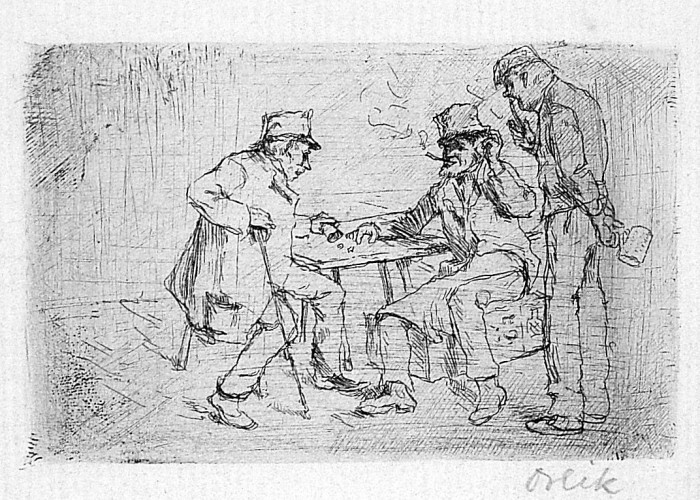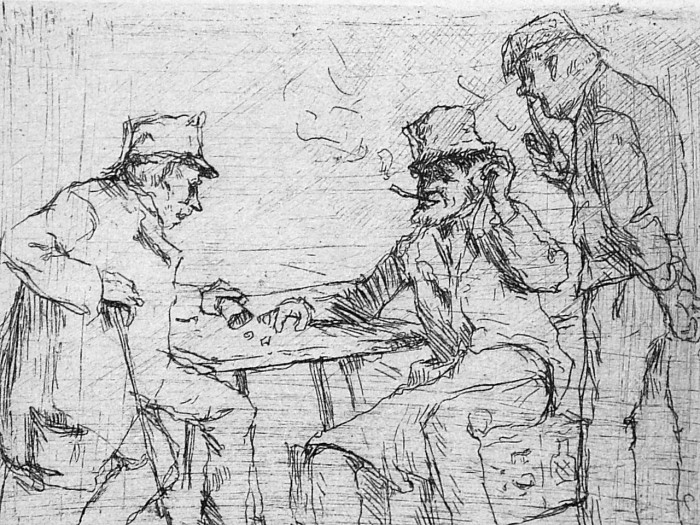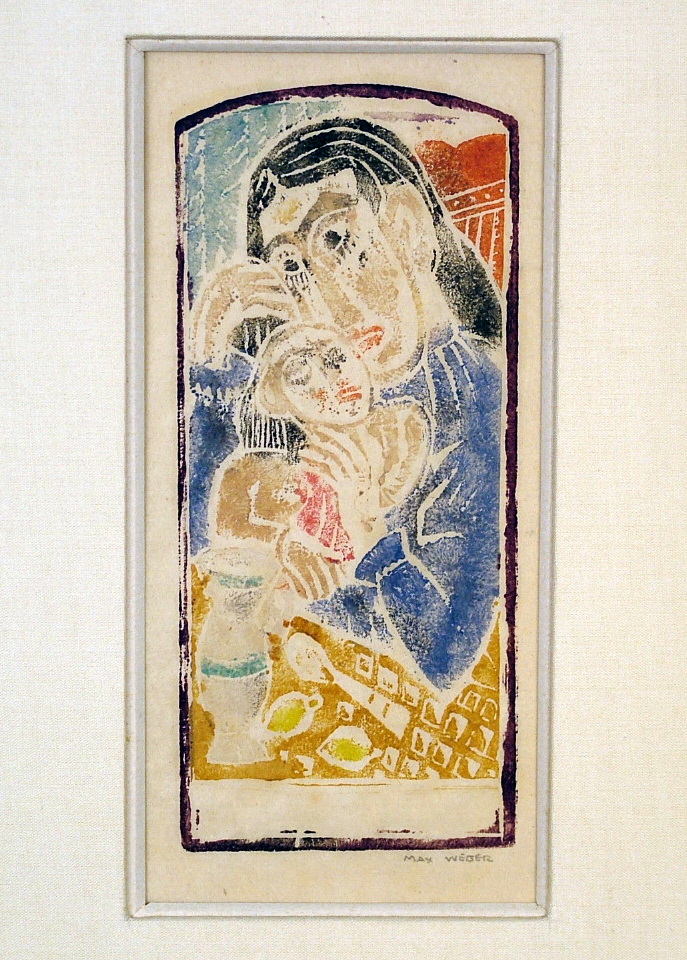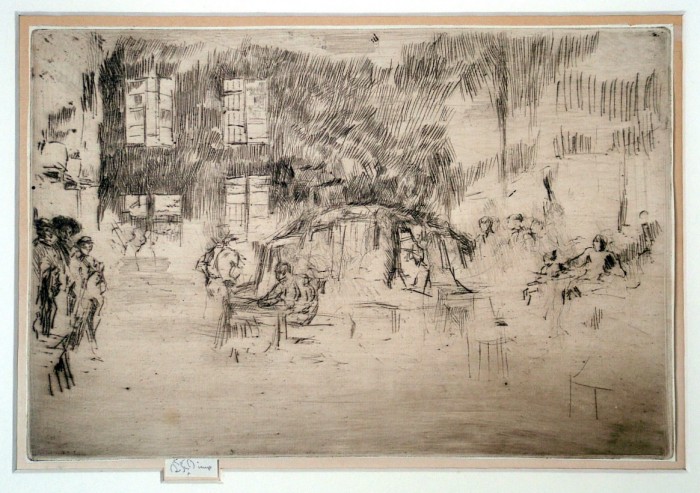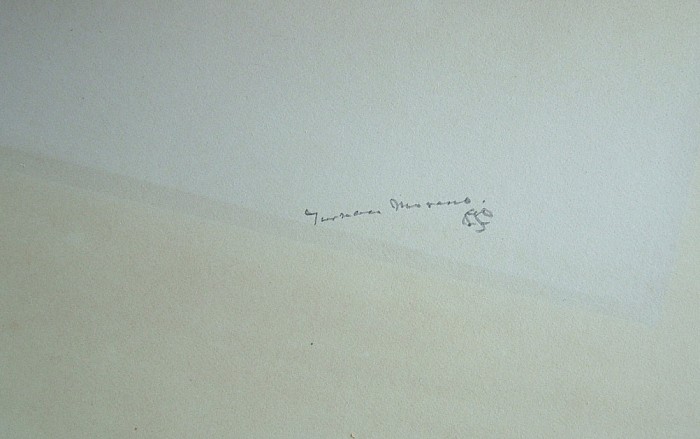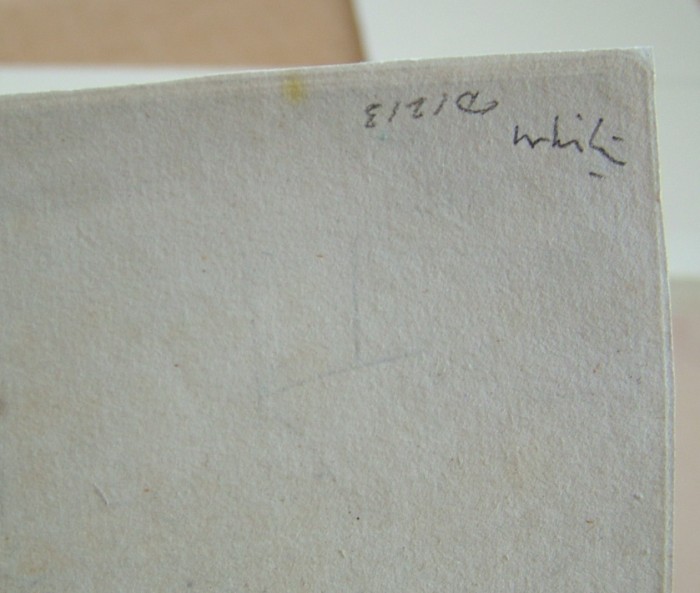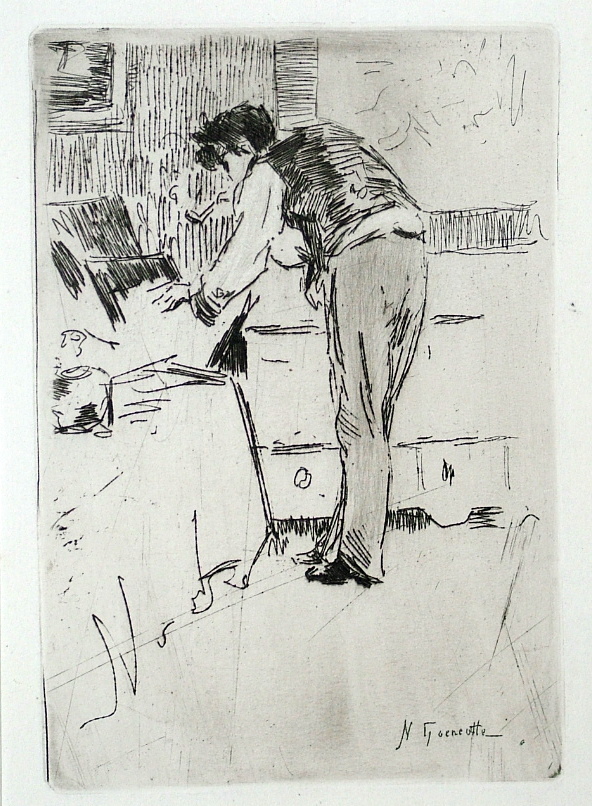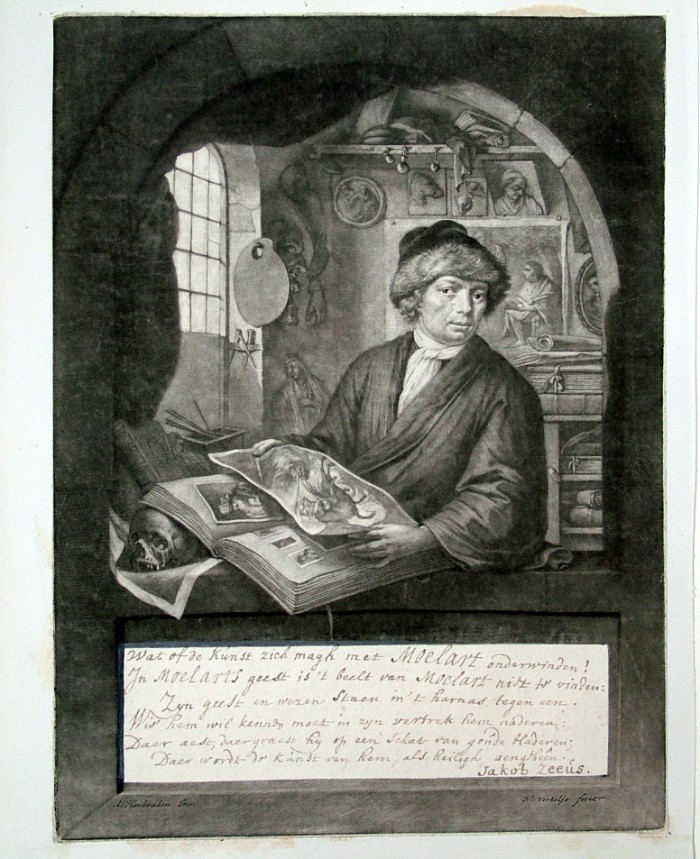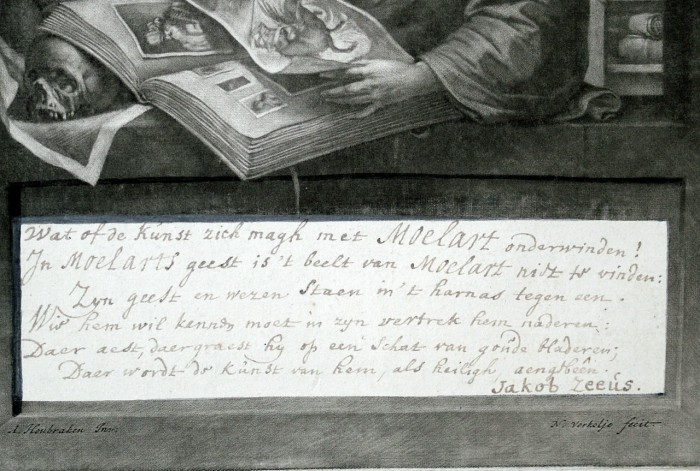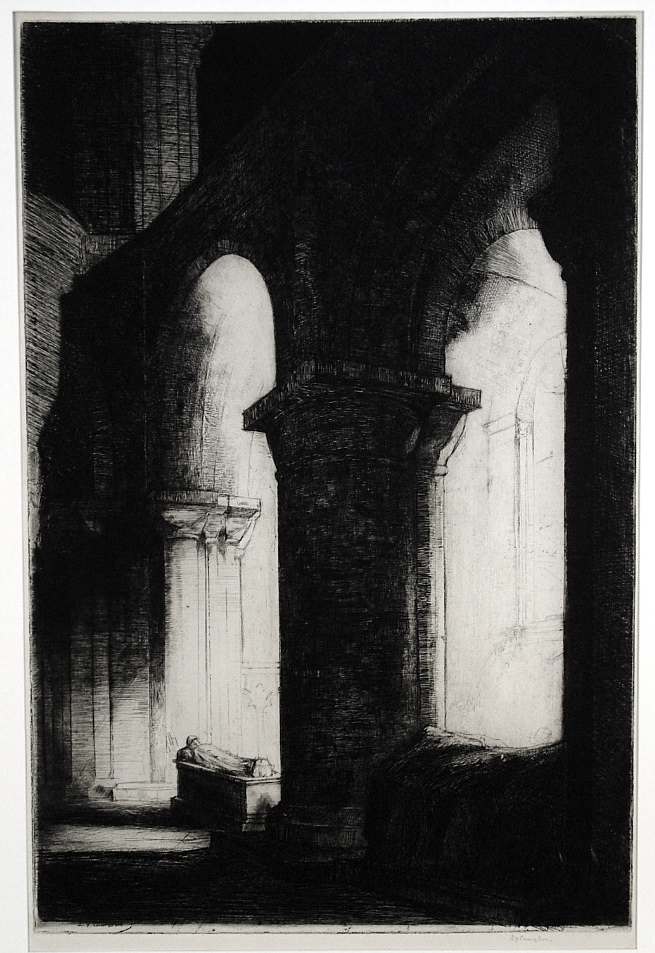Würfler – Gambler
Monday, June 27th, 2011Emil Orlik (1870-1932), Würfler – Gambler, etching, 1897, signed in pencil lower right. Reference: Söhn 52803-6, published in the art periodical PAN Vol.3, October 1897. In good condition, with margins (browning toward margin edges), 2 3 1/4, the sheet 3 x 4 1/4 inches.
A fine impression of this rarely encountered tiny gem, printed on laid paper, with plate tone. This print was later published in Pan, Vol. 3, October 1897.
Allan Wolman, in his indispensable website on Orlik (www.orlikprints.com), writes of the context of Orlik’s career at this early transitional stage:
In 1896 Orlik returned to Munich to work with his fellow pupil and life-long friend Bernhard Pankok on their first essays in the making of colour woodcut prints. They had seen examples of Japanese woodcut prints and were fascinated by them. He began contributing illustrations to the journal Jugend. By 1897 Orlik was such an accomplished print-maker that four of his small etchings were chosen for publication in the prestigious art magazine PAN. Also illustrated in PAN was a reproduction of his first poster ‘Die Weber’, designed for the play of the same name produced by Gerhart Hauptmann. Hauptmann was so impressed by the poster that he invited Orlik to Berlin to visit his studio and this was the first stepping stone to Orlik’s involvement in the theatre.
